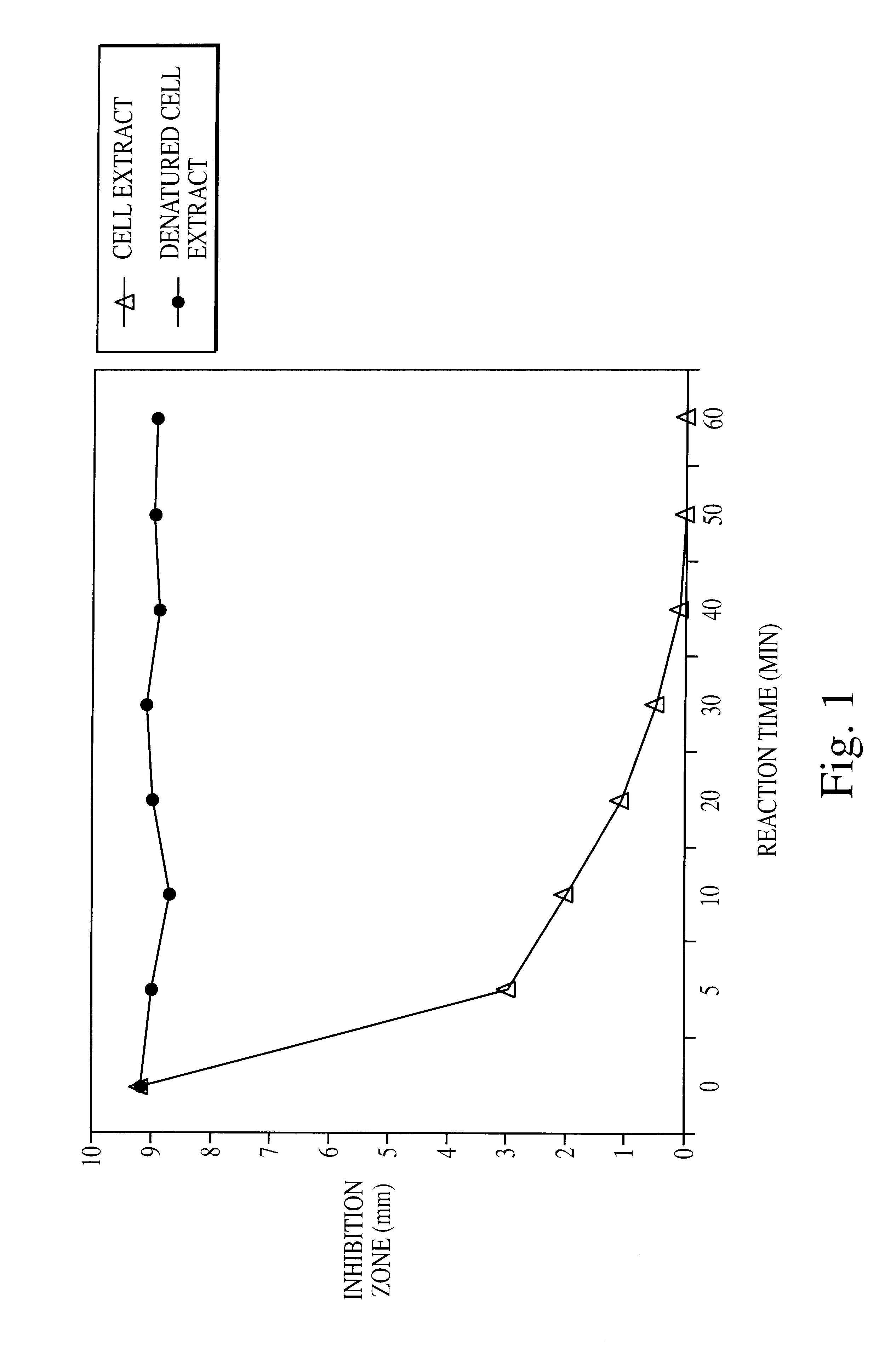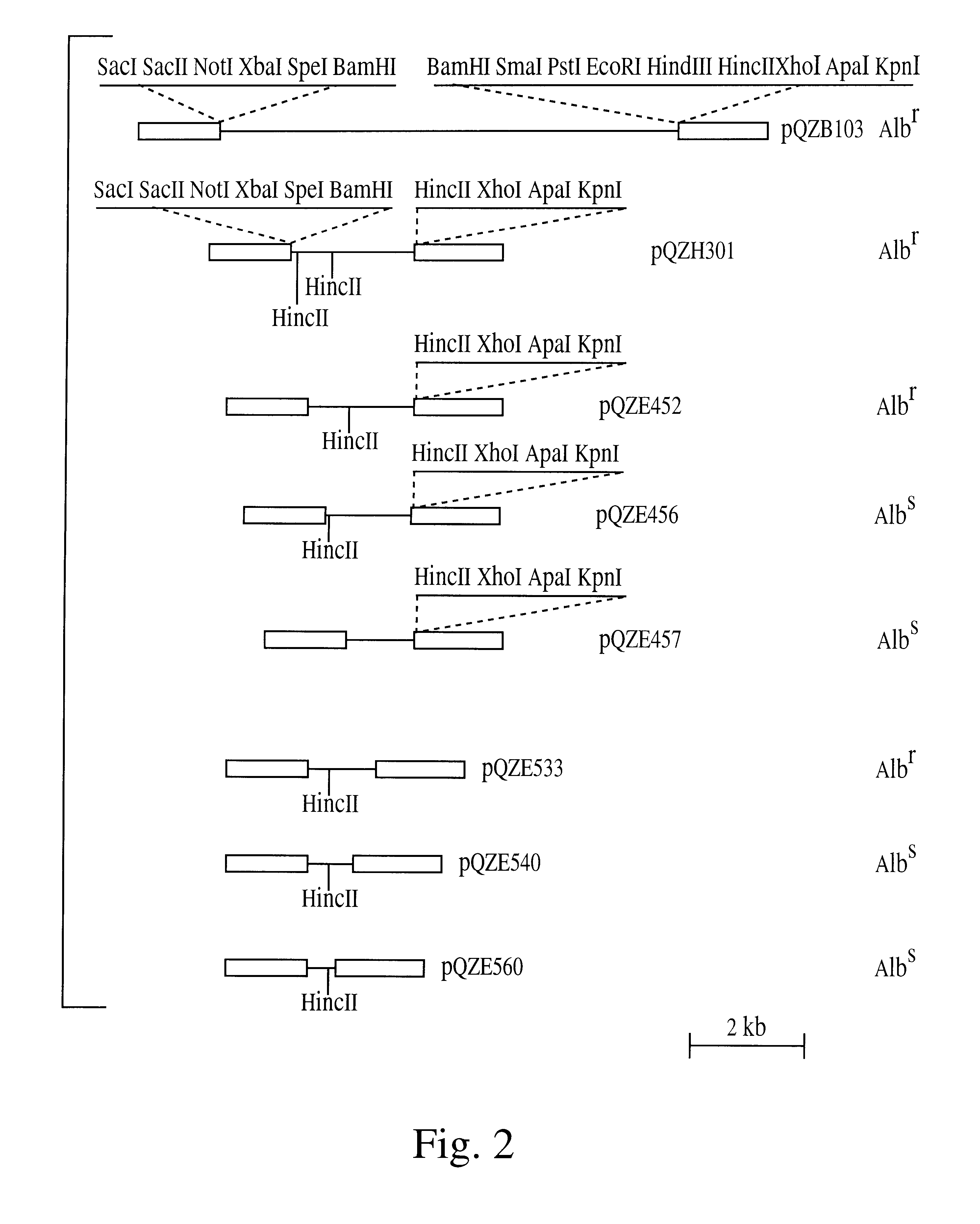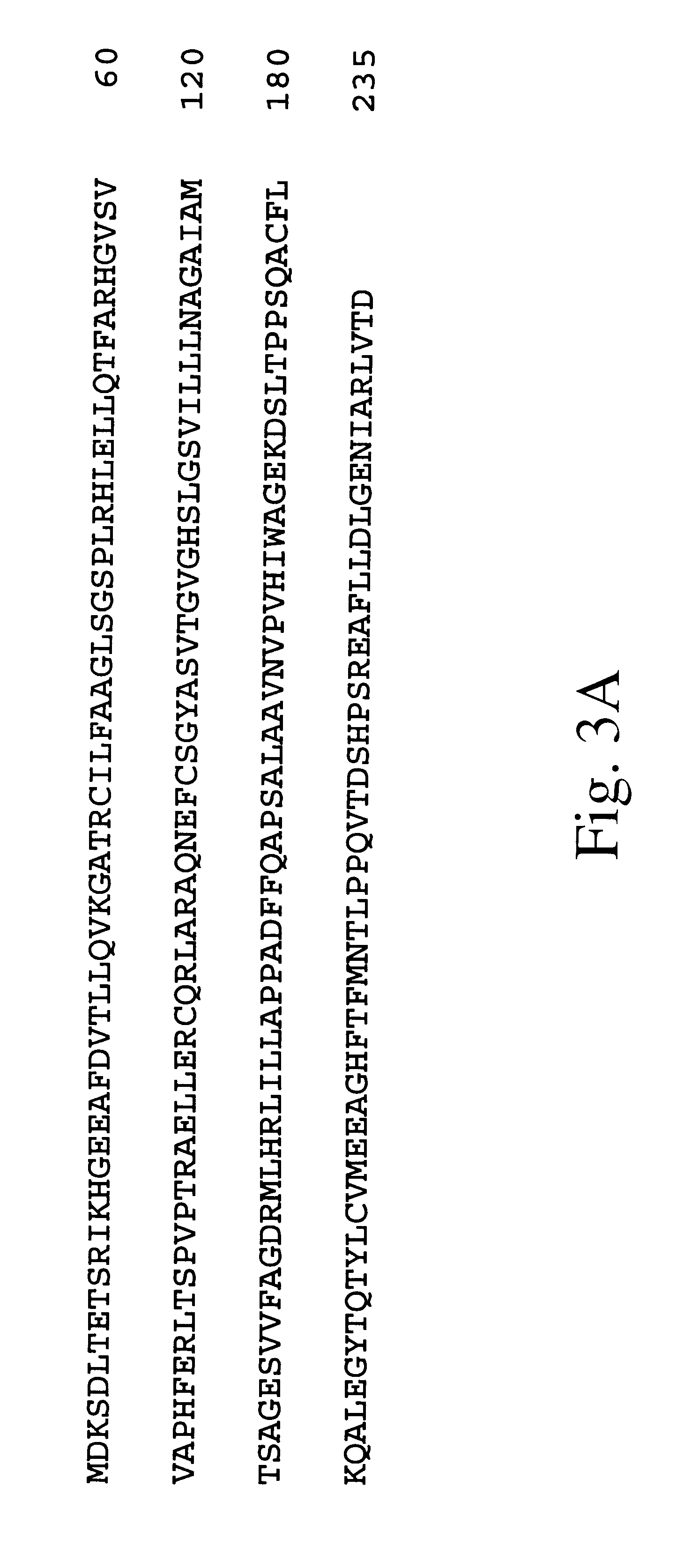Control of leaf scald disease
- Summary
- Abstract
- Description
- Claims
- Application Information
AI Technical Summary
Benefits of technology
Problems solved by technology
Method used
Image
Examples
example 2
Biocontrol of Leaf Scald Disease in Sugarcane by a Strain of Pantoea dispersa which Inactivates Albicidin
MATERIALS AND METHODS
Bacteria, media and growth conditions. X. albilineans strain XA3 was isolated from leaf scald diseased sugarcane as described previously (Birch and Patil, 1987, Physiological and Molecular Plant Pathology, 30, 199-206). All other bacteria used in the study are listed in Table 7. Escherichia coli was grown in LM medium (Miller, 1972, Experiments in Molecular Genetics, Cold Spring Harbour, N.Y.: Cold Spring Harbour Laboratory Press) at 37.degree. C. All other bacteria were grown in SP medium (Birch and Patil, 1985, J. Gen. Microbiol., 131, 1069-1075) at 28.degree. C. Broth cultures were aerated by shaking at 180 rpm on an orbital shaker.
Preparation and assay of albicidin. Albicidins produced in culture by X. albilineans strain XA3 were purified as described previously (Birch and Patil, 1985, J. Gen. Microbiol., 131, 1069-1075; Birch et al., 1990, J. Gen. Microb...
example 3
Further Studies
Experiments demonstrating the effect of expression of albicidin detoxification enzyme in X. albilineans. A 806 bp SphI-pVUII fragment, containing the intact albD gene (including promoter, structure gene and terminator region) of E. herbicola SB1403 was blunt-ended and ligated into the HindII site of suicide vector pJP5603. The ligation product was used to transform E. coli JM109 (.lambda.pir). A recombinant clone, pJPAIdSP was identified by restriction enzyme digestion and agrose gel electrophoresis. It was transferred into the mobilising strain S17-1 (.lambda.pir), and mobilised into X. albilineans XA3 which is resistant to ampicillin. Exconjugant colonies were selected on the SP agar medium containing 50 .mu.g / mL kanamycin and 200 .mu.g / mL ampicillin, and tested for albicidin production and synthesis of AlbD enzyme. Genetically modified X. albilineans expressing albD failed to induce disease on susceptible sugarcane, while the parent X. albilineans strain induced se...
PUM
| Property | Measurement | Unit |
|---|---|---|
| Volume | aaaaa | aaaaa |
| Electrical resistance | aaaaa | aaaaa |
Abstract
Description
Claims
Application Information
 Login to View More
Login to View More - R&D
- Intellectual Property
- Life Sciences
- Materials
- Tech Scout
- Unparalleled Data Quality
- Higher Quality Content
- 60% Fewer Hallucinations
Browse by: Latest US Patents, China's latest patents, Technical Efficacy Thesaurus, Application Domain, Technology Topic, Popular Technical Reports.
© 2025 PatSnap. All rights reserved.Legal|Privacy policy|Modern Slavery Act Transparency Statement|Sitemap|About US| Contact US: help@patsnap.com



